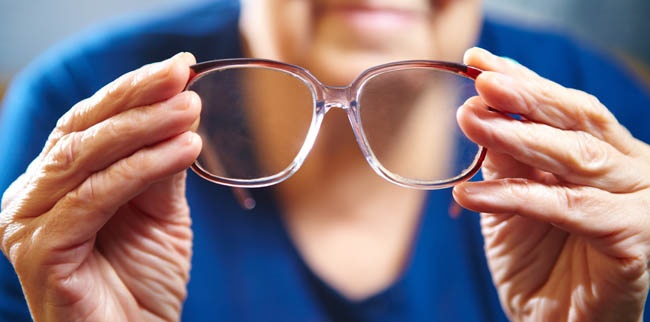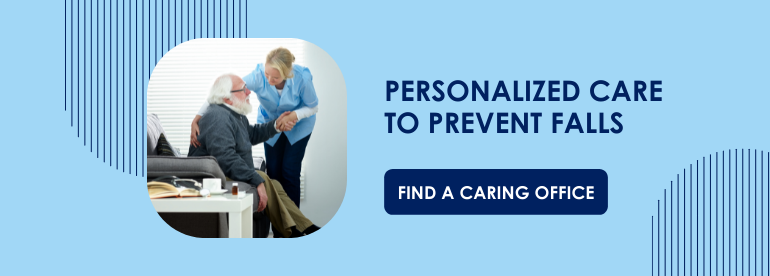Many of us, as we grow older, become the principal caregiver for an aging parent. While this is a natural and appropriate development, it can still be a source of stress, especially when accidents occur. Falls, one of the most common issues with the elderly, are dangerous and can result in broken bones or worse. There are steps, however, which can be taken to prevent injury due to a fall. Learn about some of these steps below!
Vision Problems that Cause Senior Falls
Poor Depth Perception
Depth perception is the ability to perceive the world in three dimensions and to determine the distance of an object. In the elderly, loss of depth perception is common. Restricting the use of multi-focal lenses when walking can help; bi-focal or multifocal lenses are designed to be used when looking down. Walking and looking down at the same time causes depth perception to become distorted, which in turn can cause a person to stumble and fall.
Cataracts
A cataract is a clouding of the lens in the eye, which results in a decrease in vision. More than 70% of the over-75 years of age population is at risk of developing cataracts. There are no symptoms, other than a gradual loss of vision. Increasing the intensity of lighting in the home and making sure that there are multiple sources of light can help if cataracts are an issue.
Glaucoma
Glaucoma is a group of eye disorders which can eventually lead to blindness. Characterized by damage to the optic nerve and loss of nerve fibers, it is the second leading cause of blindness in the U.S. While there is currently no cure for glaucoma, early detection and treatment can help control the disease and surgery or medication can slow or prevent further vision loss.
Adjusting to Lighting Changes
Going from a bright bathroom to a dark bedroom requires the eyes to adjust. As people get older this adjustment takes longer. Unfortunately that means an elderly person may not see a piece of furniture in the dark room and may trip and fall. Try to put nightlights in areas like hallways that might need to be walked through at night. Also consider using a dimmer light bulb in the bathroom so the contrast between light and darkness isn't so high.
Age-Related Macular Degeneration (AMD)
The portion of the eye involved in the perception fine details is effected by AMD. Sufferers are typically forced to use their peripheral vision, as their central vision becomes distorted or fails.
Diabetic Retinopathy
Diabetic Retinopathy is a secondary condition of persons with diabetes. Blood vessels in the retina become weak resulting in vision that is blotchy and distorted. If the blood sugar is not controlled in persons with diabetes, the chances of developing this eye disease increases. Warning signs include spots or strings floating across the eye, blurred vision, impaired color vision and even loss of vision.
Preventative Measures
While there is no way to halt the effects of time on our bodies, there are preventative measures that you can take. Here are just a few ideas:
-
Yearly eye exam: Screening for vision loss is fairly easy. The eye doctor will start by using a wall or handheld chart to test the depth of the senior patient's eyesight. Further tests will likely be performed to check for specific afflictions such as cataracts, glaucoma, or macular degeneration, that could be hurting vision.
-
Install brighter lights: Adding bringer lights around the home, especially in high-traffic areas, can help increase visibility and reduce falls.
-
Manage chronic conditions: If your loved one is diagnosed with a chronic condition, it's important to take care of it. These conditions may get more severe and can permanently affect health and eyesight if left untreated.
-
Pay attention to changes in vision: Contrast helps seniors see the edges that warn of a change in terrain, such as a curb or perhaps clutter on the floor. The difficulty in perceiving contrast makes depth perception much more challenging. This is a critical clue to observe and judge hazards. Additionally, loss of clarity in vision is another sign to look out for.
As you are learning to deal with the changes that aging can bring, be patient with yourself, patient with your loved one, seek advice and answers to questions. Our Fall Prevention Fact Sheet can help you understand the potential dangers of falls and how to help your loved ones.


